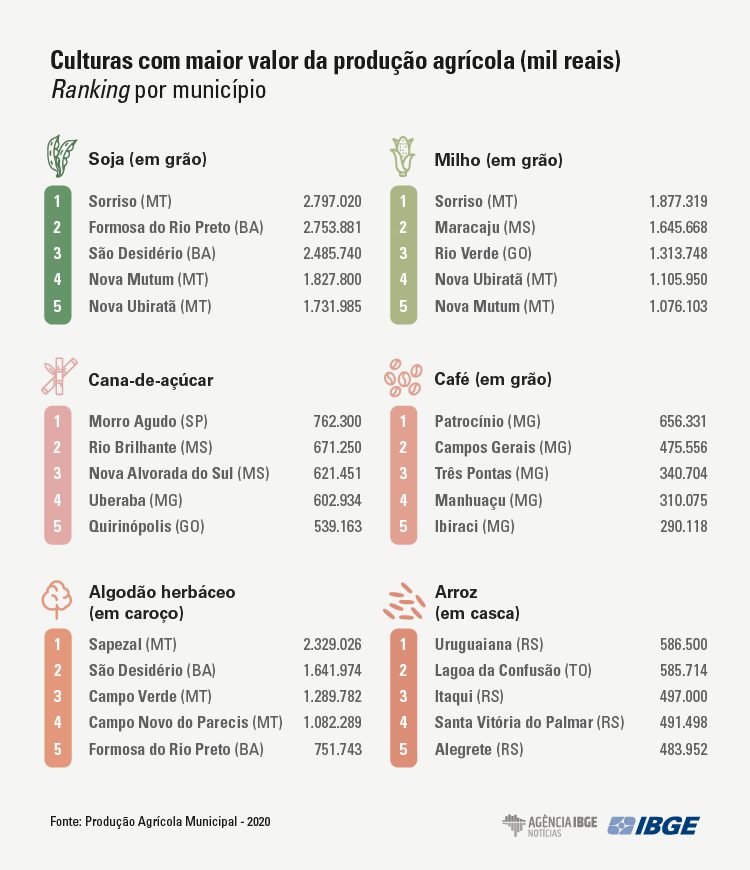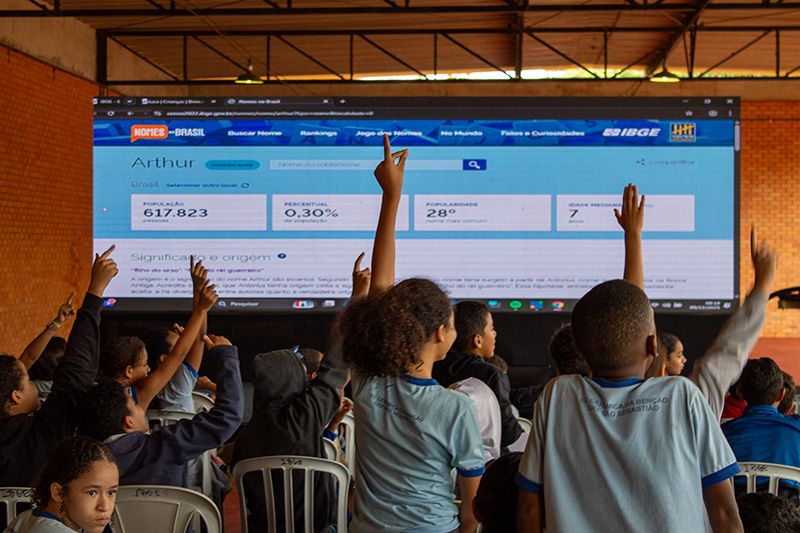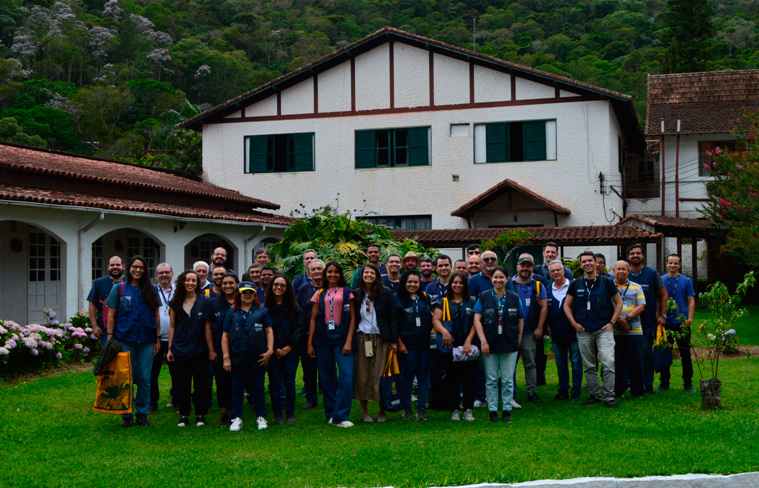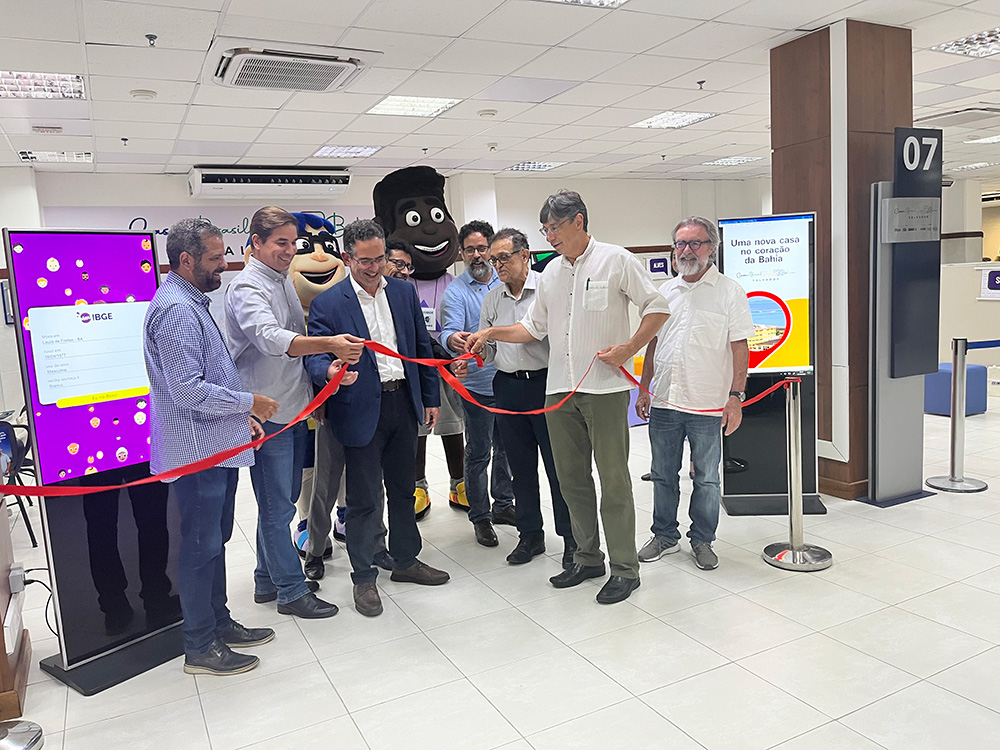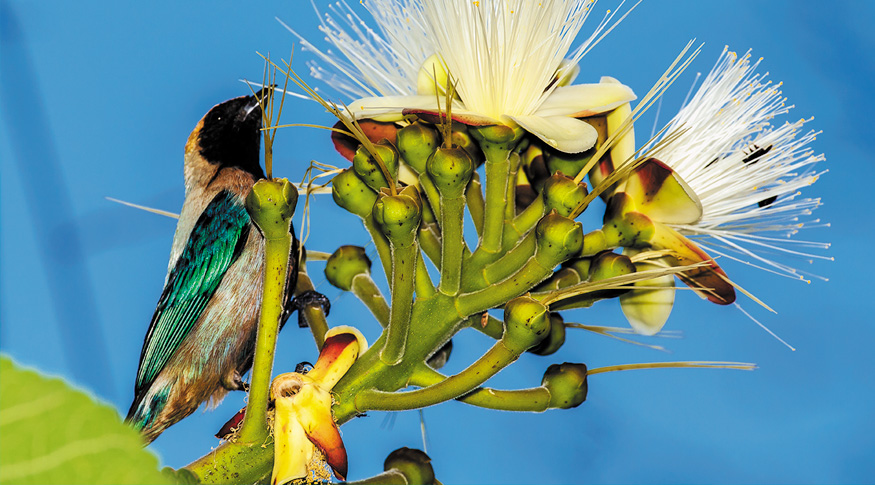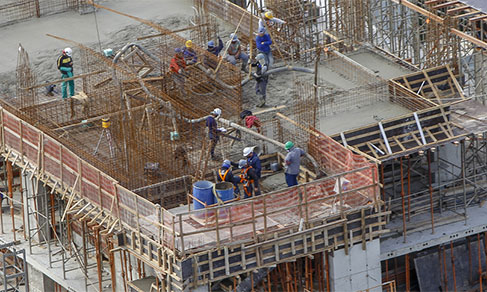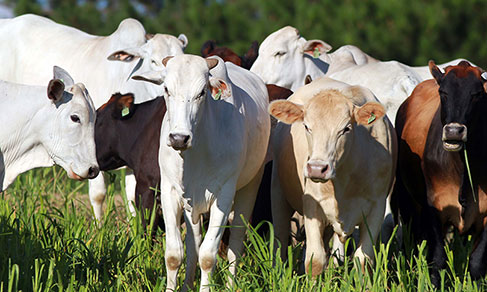PAM
Municipality of Sorriso, state of Mato Grosso, accounts for highest value of production in 2020
September 22, 2021 10h00 AM | Last Updated: September 24, 2021 02h15 AM
Highlights
- In a year marked by the Covid-19 pandemic, the value of production of the main crops in Brazil reached R$ 470.5 billion in 2020, a record in the survey’s time series.
- Among crops that exerted a bigger impact on the value of production of soybeans, coffee and corn, all with a record output in the year.
- Soybeans, main good exported by the country, hit a record output of 121.8 million metric tons.
- The output of corn reached 104 million metric tons, with an increase of 2.8% against 2019.
- The value of production of sugarcane was R$ 60.8 billion.
- With a rise in prices, rice and beans recorded increases in value of production of 32.7% and 44.2%, respectively.
- Sorriso, em Mato Grosso, teve crescimento de 35,5% frente ao ano anterior e gerou R$ 5,3 bilhões. Com esse resultado, segue como o município brasileiro com maior valor da produção agrícola.
- Sorriso, in Mato Grosso, recorded an increase of 35.5% against the previous year and generated R$ 5.3 billion.
- The value of production of Formosa de Rio Preto, in Bahia, fifth in the ranking, increased by 78.3%.
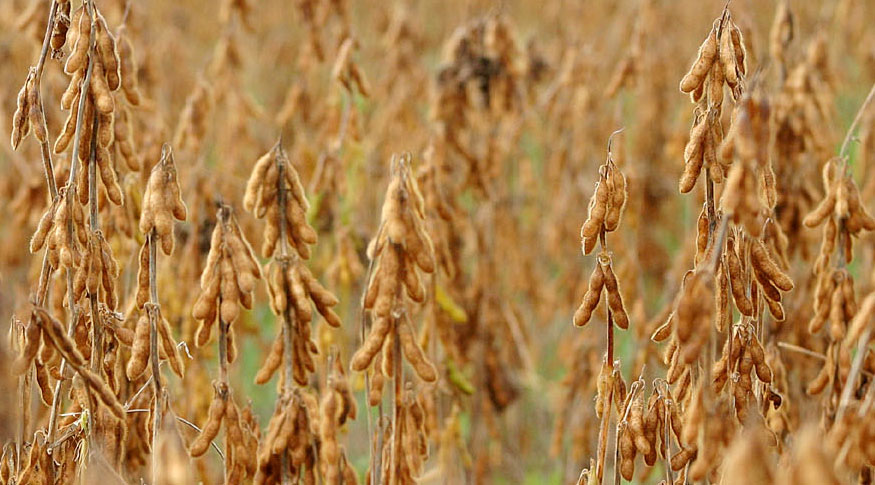
The main agricultural crops in the country hit a record value of production of R$ 470.5 billion in 2020, with an increase of 30.4% against the previous year, when it reached a total R$ 361 billion. That is the biggest increase since 2003 (34.0%). The positive result was mainly due to the rise of prices of soybeans, corn, coffee and cotton. With an increase of 35.5% against the previous year and having generated R$ 5.3 billion, Sorriso, in Mato Grosso, remains as the Brazilian leader with the highest value of agricultural production. Another highlight was São Desidério, in Bahia, with soybeans, corn and cotton. Data come from the Municipal Agricultural Production (PAM), released today (22) by the IBGE.
The survey supervisor, Winicius de Lima Wagner, explains that the increase of the value of agricultural production is partially related to the effects of the Covid 19 pandemic on the sector. “This result was due to two distinct factors: the first one was the record output of grains, which encompasses cereals, legumes and oilseeds, amounting to 255.4 million tons; the second one was the rise of crop prices, as a result of the increasing demand during the pandemic. That caused the sector to be benefited in a year marked by the economic crisis, which affected the other sectors”, the researcher says.
Soybeans, the main commodity in the country, reached an output of 121.8 million metric tons, an increase of 6.5% against the previous crop and generated gross value of production of R$ 169.1 billion. That represents an increase of 35% in relation to the value reached in 2019. This oilseed went on to account for 57.2% of the total value of grain. In 2020, the group of cereals, legumes and oilseeds hit the second consecutive record in terms of amount produced.
“Despite the delay in the planting window, caused by the shortage of rain in the end of 2019, the performance of this grain was not affected. Climactic factors were positive in almost the entire country, except for the far south of the country, which accounts for the increase of soybean productivity in the country in 2020,” Mr. Wagner explains.
In 2019, Brazil became the main soybean producer in the world, having surpassed the USA and, in 2020, it remained on top of the ranking. With such climatic conditions, Mato Grosso, main national producer of soybeans, accounted for 35.1 million metric tons (28.8% of the total) and exceeded by 8.8% the 2019 harvest. It was also the state with the highest value of agricultural production, considering all products surveyed, with a record R$ 79.2 billion.
“In 2019, climatic problems in an area between the states of Mato Grosso do Sul, São Paulo and Paraná faced climatic ended up damaging harvest that year. In 2020, such conditions were favorable both in this area and in the entire Central West Region. So, we can say the soybean crops had a better performance this year, despite the drought in Rio Grande do Sul.”
Among the main producing states, Rio Grande do Sul alone faced a decrease in productivity (-40.6% in average yield) last year. The state, which registered the third highest value of production with the 2019 harvest, lost its position to Paraná, which produced 20.9 million metric tons of soybeans in 2020. With a total R$ 59.8 billion, the state went on to represent 12.7% of the value of production of the country, only second to Mato Grosso (16.8%) and São Paulo (14.5%). The three states registered a record in agricultural output.
“The northwest of Paraná faced a drought in the production period. As a result, production in the state and ended up being after Rio Grande do Sul. Last year, Rio Grande do Rio Grande do Sul had faced this climatic difficulties and Paraná regained the third position in the ranking of states with the highest value of production.”
Among the commodities that stood out in 2020 is corn, the output of which increased by 2.8%, amounted to 104 million metric tons. This grain became the second product with the highest value of production, followed by sugarcane. “Corn has hit records every year. Climatic conditions in 2020 were favorable once again and the price of this product had been rising, which ended up being an incentive for producers to expand the area of production and to invest in technology,” Mr. Wagner says, as he highlights that grain prices in keep on rising in the international market, which led to an increase in value of production. Both corn harvests accounted, together, for R$ 73.9 billion, 55.4% more than in the preceding year.
Sugarcane also recorded an increase in value of production, which reached R$ 60.8 billion in 2020. There was an increase of 0.5% in its volume of production, which amounted to a total 757.1 million metric tons. In the last few years, the growth of ethanol production and the increased participation of the country in the international market influenced the national industry of alcohol. Sugarcane, whose planting areas have doubled in the last three decades, had an increase of 188.2% in volume of production between 1990 and 2020.
According to the researcher, however, areas directed to sugarcane crops have stagnated. In 2020, the area used for crops was reduced by 0.9%. Sugarcane, an important commodity exported by Brazil, has fallen in importance to other crops such as corn and soybeans, which are more profitable for producers. “Stagnation has been observed for the last six years together with the reduction of planting areas, mainly due to the mechanization of production and the competition with other crops that have higher prices in the market. Some areas in Brazil have faced difficulties in adapting to automatized sugarcane harvesting and that causes producers to choose other crops instead,” Mr. Wagner says.
Growing demand for rice and beans in the pandemic has affected value of production
Rice and beans are two products with major price changes in 2020. “As a consequence of the Covid-19 pandemic and the social isolation measures, there was an increase in demand, once many consumers had a stock of these products at home. Prices rose and led to a significant increase in value of production, which resulted in higher profitability for the producer”, explica Winicius.us.
According to the researcher, these factors, together with the appreciation of the dollar in comparison with our currency and the subsequent attractiveness of this product in the foreign market, account for the increase of 32.7% in the production value of rice, which reached R$ 11.6 billion. Beans generated R$ 10.8 billion, an increase of 44.2% against the production of this legume in 2019. Output also increased by 4.4%, amounting to 3.0 million metric tons. Despite the retraction of 1.8% in output, Paraná is still the main producer of beans in the country, with a harvest of 624.6 thousand metric tons.
Another crop with a record output was upland cotton, which reached 7.1 million metric tons, an increase of 2.6% against the previous year. “In 2018 and 2019, the growth of cotton resulted mainly from the increase in planting areas. As there were already big stocks in the world market, in 2020, the areas were not increment in productivity that led to the record in the time series,” the researcher explains. With such an increase, the value of production of cotton fiber hit R$19.1 billion, with an increase of 19.5% against 2019.
There was a decrease of 2.2% in the production of Orange, which reached 16.7 million tons. Despite the decrease, value of production increased by 14.3%, and amounted to R$10.9 billion. The same situation took place in the case of banana, whose production fell by 2.8% and whose value of production increased by 14.5%, having reached R$ 8.6 billion..
“As 2020 was marked by the rise of prices, one of the effects of the pandemic, both in terms of the depreciation of real and of the increased consumption of food products, prices of most of these products rose and their value of production had a similar behavior,” the survey analyst explains.
Value of production increased by 54.4%
The production of coffee in the country amounted to 3.7 million metric tons in 2020, with an increase of 22.9% against the previous year. Value of production was R$ 27.3 billion, an increase of 54.4%. The researcher explains that 2020 was a year of positive results for the biennial production of coffea arábica, a phenomenon observed every two years, when plants have bigger productivity, and with a rise of prices in the foreign market. “That explains the significant increase in value of production.” The productivity of coffea arabica was 28.7% above that of 2019. Coffea canephora, in turn, faced a 5.0% in output, which amounted to 870.6 thousand metric tons.
Most of the coffee produced in the country is of the arabica type. In 2020, this type of coffee represented 76.5% of the total produced, 2.8 million metric tons. The value of production generated was R$ 22.6 billion, 66.3% more than a year ago. With an increase of 38.3% in output, Minas Gerais was responsible for 72.2% of all the coffea arabica harvested in Brazil in a year. The state produced 2.0 million metric tons and hit a value of R$ 16.5 billion. São Paulo, second main producing state of coffea arabica, recorded an increase of 18.8%, having reached 344.6 thousand metric tons and hit a total value of R$ 2.9 billion.
Decrease in volume of coffea canephora did not affect its value of production, which recorded and increase of 14.8% against 2019, with a total R$ 4.7 billion. Three states were responsible for most of the production: Espírito Santo, Rondônia and Bahia.
Central West records an increase of 35.6% in value of production
Among the major Regions, the Central West remained as the main national producer, with a total R$ 146.3 billion, with an increase of 35.6% against that of 2019. Mato Grosso, state with highest value of production, generated R$ 79.2 billion. The second state with highest value of production was Goiás, a total of R$ 36.2 billion. Both states stood out in the production of soybeans and corn.
Soybeans and corn were also the crops that generated highest value of production in the Northeast, a Major Region that had an increase in production and generated R$ 58.3 billion. The region known as Matopiba, which encompasses Tocantins and part of the states of Maranhão, Piauí and Bahia, stood out in the production of these grains. Sugarcane, another traditional product in the Northeast, was in the third position among those with the highest value of production.
In the North and in the South, soybean was the main agricultural crop. Pará had the highest value of production among states in the Northeast, with an increase of 45.2% in 2020. Igarapé-Miri, a municipality that stands out due to the production of acai, remains as the main producer in the Major Region: R$ 1.6 billion, an increase of 79.8% in the year.
As for Southern states, a highlight was Guarapuava, in Paraná, which generated R$ 1.2 billion. The main crop of this municipality is soybeans. The Southeast was the only Major Region where this oilseed was not the main product harvested. With an increase of 28.2% in value of production, having generated R$ 124.6 billion, the area was a highlight in sugarcane planting. The southeastern municipality with the highest value of production was Itapeva, which stood out in terms of soybean planting and generated R$ 2.4 billion.
Value generated by Sorriso, in the state of Mato Grosso, increased by 35.5% in 2020
Twenty of the 50 municipalities with highest production figures in the country were located in Mato Grosso. Sorriso (MT), the municipality which accounted, alone, for 1.1% of the value of national production, registered R$ 5.3 billion, an increase of 35.5% against the previous year. As a consequence, it remained in the first position among those with highest value of production. Besides soybeans, Sorriso stood out in as a producer of corn and cotton.
The second highest value of production was that of São Desidério, in Bahia, a state that also harvests soybeans, corn and cotton. Value generated by the municipality recorded an increase of 44.6% and reached 4.6 billion. Sapezal (MT), which had accounted for the second main value of production among the municipalities, was in the third position in the ranking. With an increase of 26.7%, the municipality generated R$ 4.3 billion in gross value.
“São Desidério is a highlight mainly due to the crops of soybeans, whereas in Sapezal cotton was the main crop. Since the increase of soybeans surpassed that of cotton, that can account for the advance of São Desidério in the ranking of biggest agricultural production,” Mr. Wagner analyzes.
Another highlight in the 2020 edition of PAM was Formosa de Rio Preto, also located in Bahia. With an increase of 78.3% in gross value added, the city, which recorded significant advances in the production of soybeans, cotton, corn and sorghum, was in the fifth position among municipalities with highest production value. In the previous year, it was in the 11th position.
Maracaju, in Mato Grosso do Sul, which, in 2019, was in the 14th position in the ranking of municipalities with highest value of production, recorded an increase of 103.2% in this indicator and reached the eighth position.
